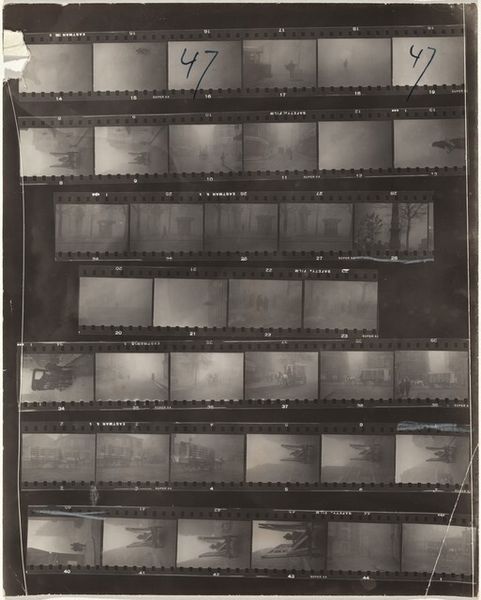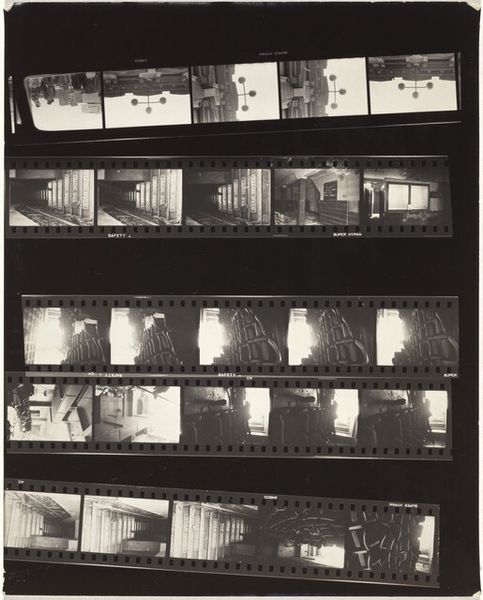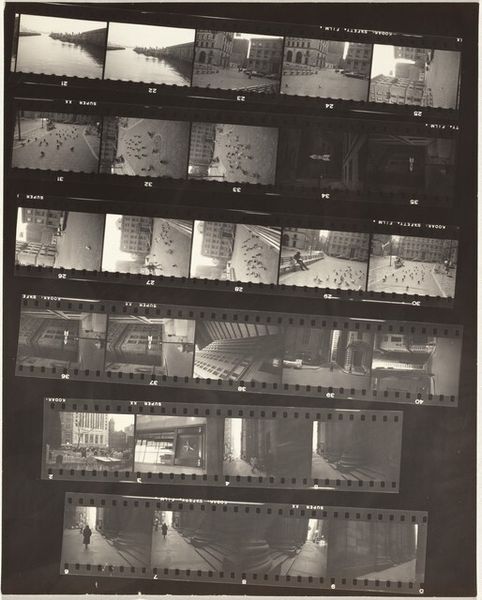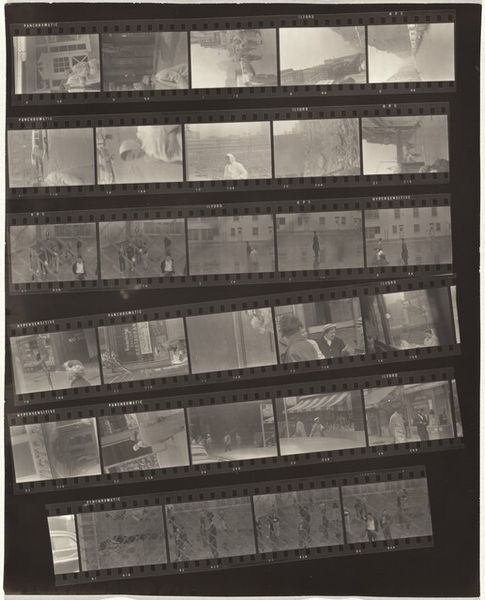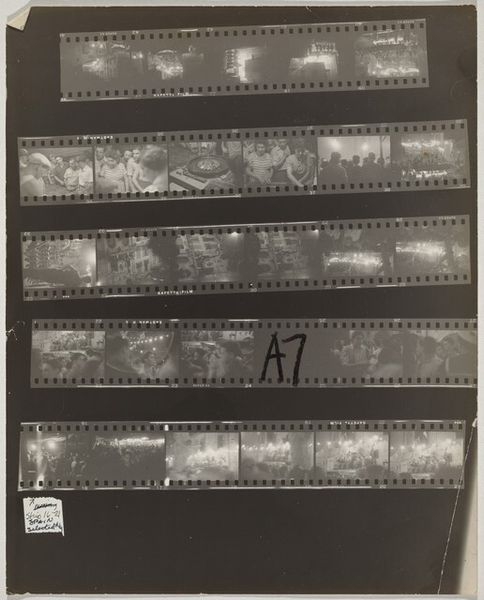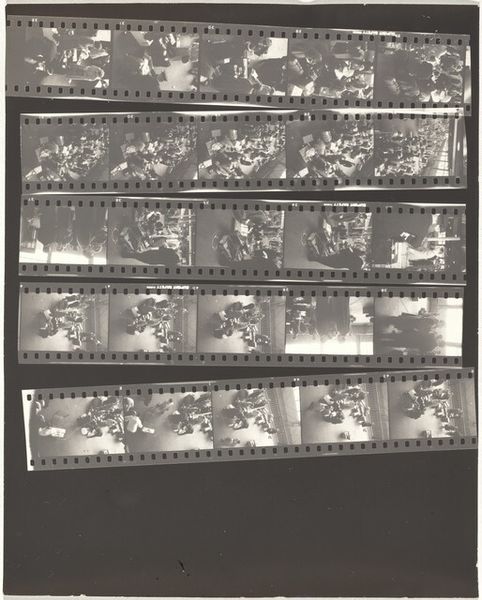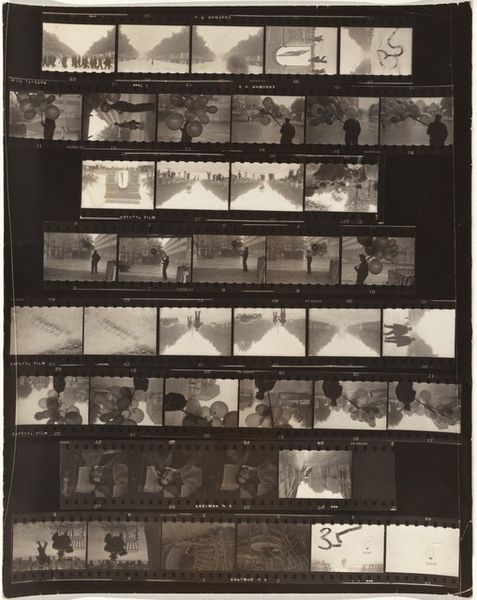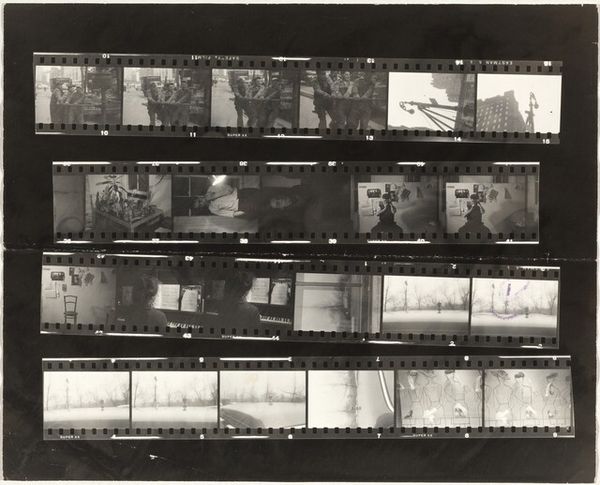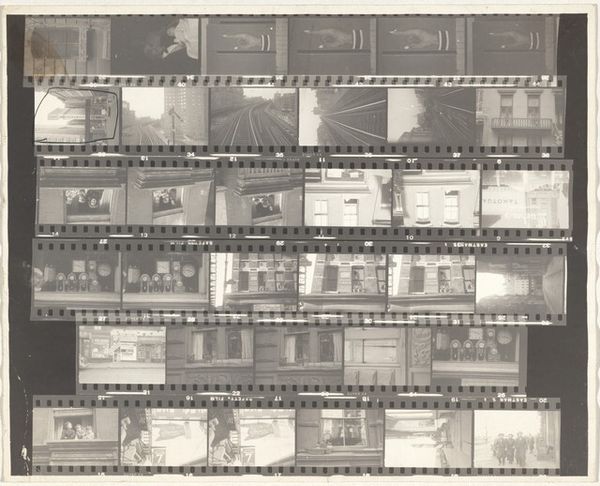
Dimensions: overall: 29.8 x 23.9 cm (11 3/4 x 9 7/16 in.)
Copyright: National Gallery of Art: CC0 1.0
Curator: Looking at Robert Frank's "Paris 48A" gelatin silver print from 1949-1950, the overall feeling it gives me is kind of…melancholy. Like a half-remembered dream clinging to the edges of consciousness. Editor: That's interesting. I see it as raw. You're confronted with the photographic process itself. We're looking at a film strip – the raw material, the tool for producing the image, not just a final polished print. It highlights the means of production right there, the work involved in creating the picture. Curator: Yes, the film strip presentation is very unusual! Like the artist inviting us behind the curtain, showing us the working material that informs the final image. There are a couple of cityscape moments caught within those frames…did you notice them? Distant lights shimmering through mist. Almost like memory fragments. Editor: Exactly, but also the 'safety film' and 'Eastman Kodak' markings on the strip point to mass production and the standardization of photographic materials. Frank is using readily available materials to capture a particular moment in Paris. How the mundane informs the profound. Curator: But that specific combination of materials – that Kodak film, Frank's eye, Paris then – all become absolutely unique, almost accidental. Think about those fleeting instants…like a ghost’s diary or something! Does the standardization diminish or intensify the poignancy of it all, do you think? Editor: I wouldn’t use the word diminish. It contextualizes it. The mass-produced materials speak to accessibility and democratization of photography. The images aren’t detached, elevated…but grounded in that material reality. Curator: You are right, of course, seeing the mundane of its material context against the emotional experience enriches the understanding of both. It emphasizes how art and raw life intertwine, then. This raw presentation does not leave any space for over-romanticization. Editor: And that material context, that visible filmstrip, acts almost like a score alongside the pictures. To see both the method, and its result, and acknowledge the reality of artistic making and image creation. Curator: Absolutely! In many ways, acknowledging artistic production and its realities can also create something beautiful. Editor: That's where the dialogue is! Between material, labour and image.
Comments
No comments
Be the first to comment and join the conversation on the ultimate creative platform.
